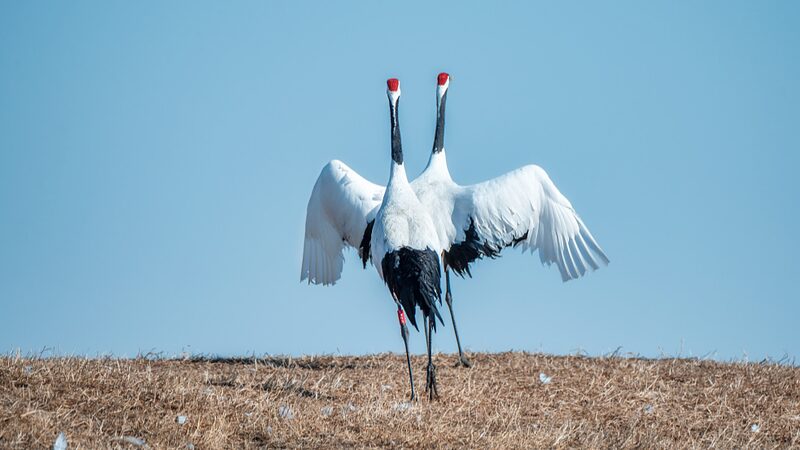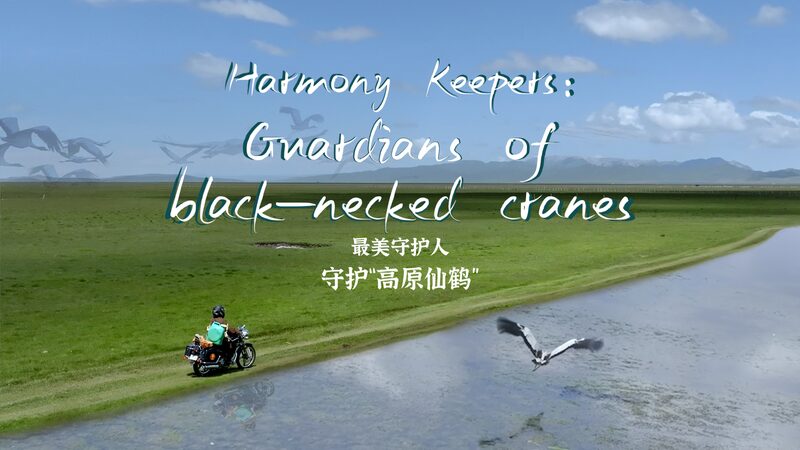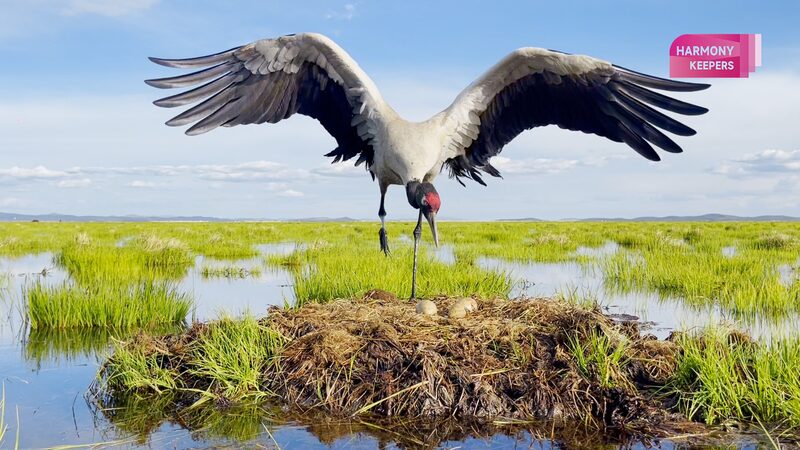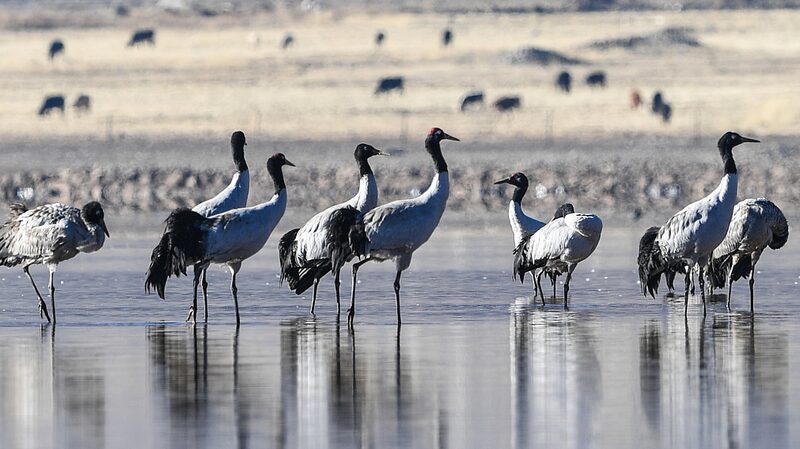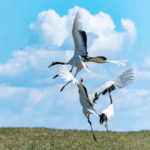As the warmth of spring spreads across northeast China’s Heilongjiang Province, the Zhalong National Nature Reserve comes alive with the graceful presence of red-crowned cranes. Recognized as one of the world’s largest and most endangered crane species, these majestic birds have returned to the wetlands, marking the beginning of their annual courtship and mating season.
The red-crowned crane, revered in Chinese culture as a symbol of longevity and fidelity, is under national protection due to its vulnerable status. The Zhalong National Nature Reserve, covering an expansive area of marshes and reed-filled wetlands, serves as one of the most crucial habitats for these rare birds.
Local conservation efforts have seen a positive impact on the red-crowned crane population. Rangers and researchers at the reserve have reported increased sightings, indicating a flourishing ecosystem. “The return of the red-crowned cranes is a testament to the successful preservation of their natural habitat,” said Li Wei, a senior ornithologist at the reserve.
Visitors and bird enthusiasts are drawn to the reserve to witness the cranes’ elaborate mating dances—a captivating display of synchronized movements, leaps, and calls. These rituals not only strengthen pair bonds but also play a vital role in the species’ reproduction.
The flourishing of red-crowned cranes in Zhalong highlights the importance of wetland conservation in Asia. Wetlands like Zhalong are essential for biodiversity, supporting numerous species of flora and fauna. The reserve’s success story underscores the need for continued environmental protection and sustainable practices.
As global attention turns towards conservation, the red-crowned cranes of Heilongjiang Province stand as a beacon of hope. Their thriving presence is a reminder of the profound impact that dedicated protection efforts can have on preserving the natural wonders of Asia.
Reference(s):
cgtn.com
